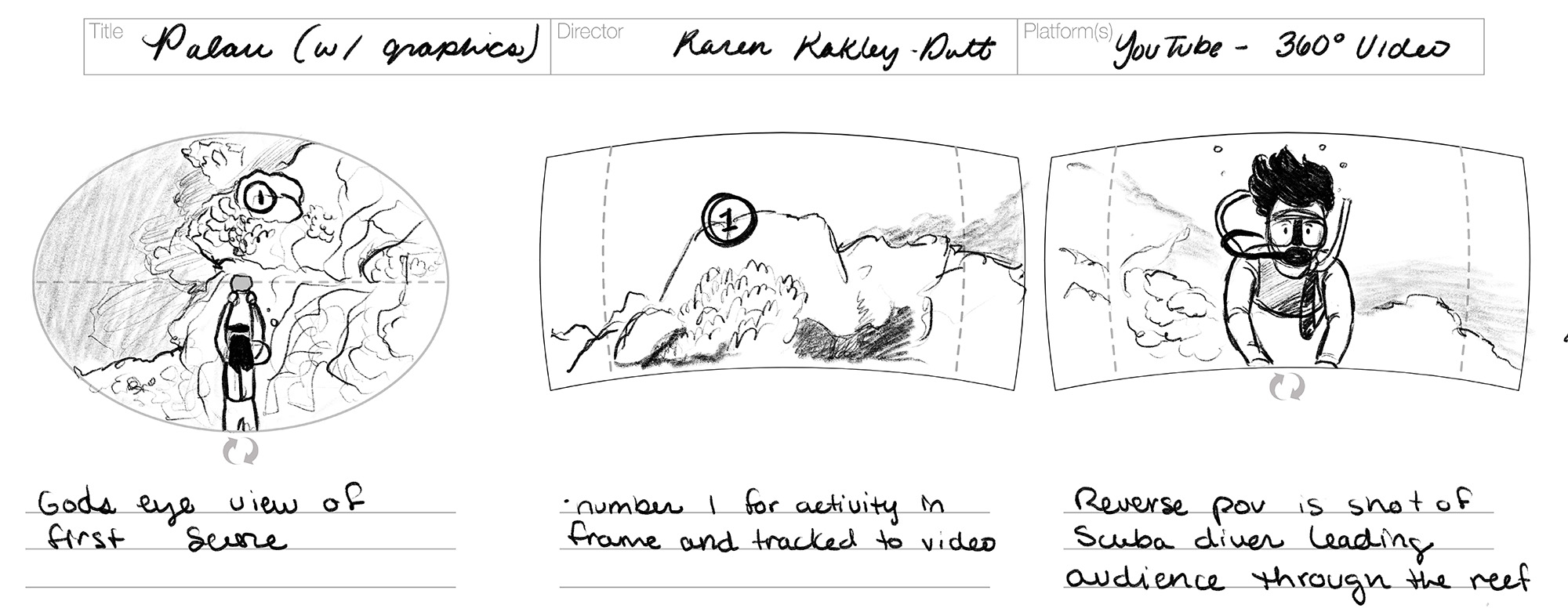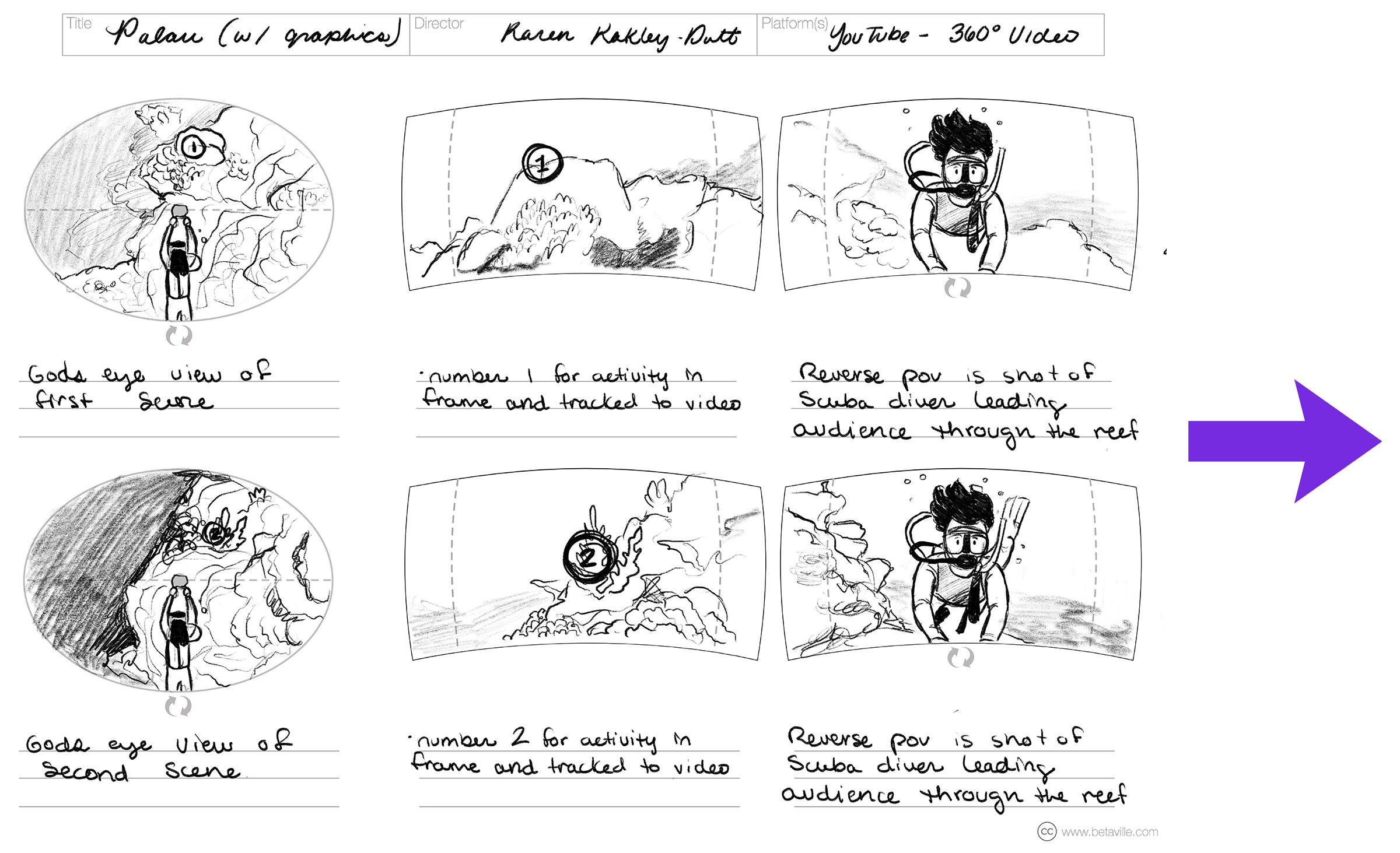
Immersive Storyboarding
Setting the Scene
Immersive media – 360º video or VR – is not like traditional video in that there’s no fixed frame through which you, the creator, directs the viewer’s attention. Instead, it’s somewhat helpful to imagine planning immersive media like a stage production that happens around the viewer.
Thinking of the viewer as being in a fixed position allows you to then plan what they’ll be seeing in all directions. Some questions to ask yourself might include:
- Where might the action be taking place?
- Will a character be moving from one side of the field of view to another?
- How close is a demonstration occurring to the viewer?
- Is an object presented to the viewer uncomfortably close vs where they would stand in real life?
- If action is occurring in one direction, is there also action happening in another direction?
If you are unsure about how best to set up a given scene or just want to bounce ideas around, don’t hesitate to get in touch. Consultants are available to talk with you by phone or set up remote or in-person meetings about your project. Looking for inspiration? The Experience Catalogue features 360º videos and VR content from all over the world.
Turn by Turn
For many projects, it can be helpful to add some form of guidance to help direct viewer attention. As you develop your immersive storyboard, you may want to consider points during and between your scenes where this guidance would come in, what form it might take and how much of it is necessary.
Examples
Voice: A simple “look to your left” or “turn around” command as narration.
Tone: A chime or buzz that lets your viewer know to look for an item of focus.
Arrow: A set of arrows directs the viewer on-screen.
Exhibit A
You may also want to mix in additional elements in your 360º or VR scene like still photos or flat video. This may help show a close up of a process, details of an object, charts and graphs and more.
Leveling Up
As you mix various guidance elements into your project, your Level of Guidance will increase. This not only affects your viewer’s experience of the immersive media, but also your production requirements.
How are the levels defined?
The Level of Guidance indicates how much the creator has imbued the video with a sense of at what the viewer should be looking.
For instance, a Level 1 video would mean that the camera has been left in place while life happens around it, allowing you, as the viewer, to simply observe. A Level 2 video might incorporate subtle visual, textual or audible hints or simple transitions. A Level 3 video would rely on a handful of hints and transition. A Level 4 video would employ multiple hints and dialogue. And a Level 5 video would rely on all of the above as well as a narrative arc that pushes the viewer forward.
Another way of looking at this would be how much production went into the video if you are considering making one of your own like it.
Drawing Your Storyboard
This template has been specifically designed with immersive media projects in mind and depicts three views per row:
- A bird’s eye, top-down overview;
- a forward-facing field of view;
- and an opposing, backward-facing field of view.
The bird’s eye view will allow you to map out your entire scene, including motion and distance from the viewer/camera’s position. The forward-facing view will allow you to plan what the viewer initially sees while the backward-facing view will keep tabs on what else might be occurring in the scene.
Guidance elements can be noted visually and/or using the lines below each view.

Putting It All Together

